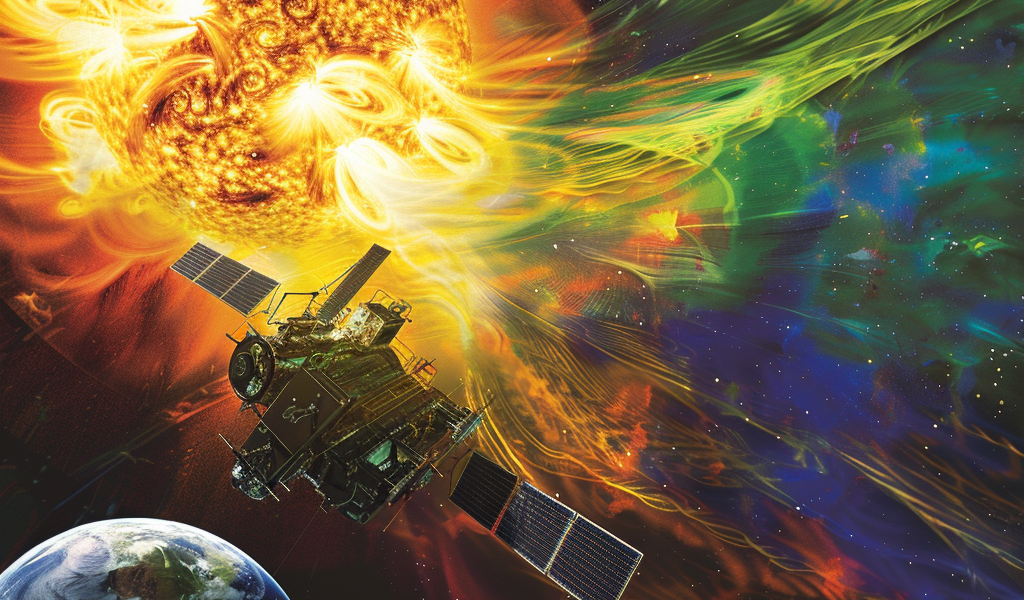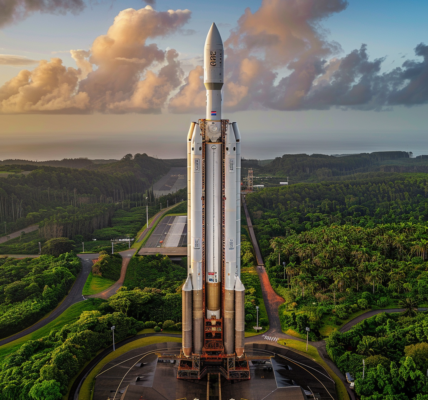SwRI Integrates Solar Wind Sensor into NOAA’s SWFO-L1 Satellite for Enhanced Space Weather Monitoring
The Southwest Research Institute (SwRI) has made significant strides in advancing space weather monitoring by successfully integrating its innovative Solar Wind Plasma Sensor (SWiPS) into the National Oceanic and Atmospheric Administration’s (NOAA) upcoming Space Weather Follow On-Lagrange 1 (SWFO-L1) satellite. This state-of-the-art sensor is designed to track solar wind and space weather, providing essential real-time data that will aid in predicting and mitigating the effects of solar storms on Earth.
Understanding the Role of SWiPS in Space Weather Monitoring
The Solar Wind Plasma Sensor (SWiPS) is engineered to measure the characteristics of ions released by the Sun, particularly those linked to coronal mass ejections (CMEs)—massive bursts of solar plasma that can disturb Earth’s magnetic field. These measurements are crucial for forecasting space weather events that could potentially disrupt satellites, power grids, and communication systems on Earth.
Dr. Robert Ebert, the principal investigator for the SWiPS project at SwRI’s Space Science Division, highlighted the importance of this achievement: “The delivery and integration of SWiPS is the culmination of four years of hard work by a very dedicated and talented team. I couldn’t be prouder of this group.” He further noted that the data collected by SWiPS will enable real-time warnings of space weather phenomena before they reach the vicinity of Earth.
SWFO-L1: A New Frontier in Solar Observation
The SWFO-L1 satellite, now equipped with the SWiPS, will orbit the Sun at a strategic location known as L1, which is approximately one million miles from Earth. This location allows the satellite to continuously observe solar activity and monitor solar wind conditions. By being stationed at L1, the SWFO-L1 will provide early detection of potentially hazardous space weather, thereby enhancing our preparedness for solar storms.
The Importance of Real-Time Data
The integration of SWiPS into the SWFO-L1 satellite marks a significant advancement in our ability to monitor space weather. Solar storms can have far-reaching effects on technology and infrastructure on Earth, such as satellite operations, GPS systems, and power grids. By obtaining real-time data on solar wind and space weather conditions, scientists and meteorologists will be better equipped to predict and respond to these potentially disruptive events.
With the rise of technology and dependence on satellite communications, the implications of solar storms are more critical than ever. The ability to forecast these events can help mitigate risks and protect essential services that rely on satellite technology.
Future Implications for Space Weather Research
The successful integration of SWiPS into the SWFO-L1 satellite is a testament to the ongoing efforts in space weather research and monitoring. As our understanding of solar activity improves, the data provided by SWiPS will contribute to a broader understanding of space weather dynamics and its impact on Earth.
In addition to protecting technology and infrastructure, this research has implications for space exploration. Understanding solar wind and its effects on spacecraft is vital for future missions beyond Earth, including those aimed at Mars and other celestial bodies.
Collaboration in Space Weather Monitoring
The collaboration between SwRI and NOAA exemplifies the importance of partnerships in advancing scientific research and technology. By combining expertise and resources, these organizations are paving the way for enhanced capabilities in space weather monitoring and forecasting.
As the SWFO-L1 satellite prepares for its mission, the scientific community eagerly anticipates the valuable insights that SWiPS will provide. The sensor’s ability to measure solar wind properties will play a crucial role in developing predictive models for space weather events.
The Future of Space Weather Monitoring
As technology continues to evolve, the need for advanced monitoring systems like SWiPS becomes increasingly vital. The data collected by such sensors will not only improve our understanding of solar activity but also enhance our ability to protect Earth’s technological infrastructure from the unpredictable nature of space weather.
With ongoing advancements in sensor technology and space observation, the future of space weather monitoring looks promising. The integration of SWiPS into the SWFO-L1 satellite is just one example of how innovative research can lead to significant improvements in our ability to predict and respond to solar storms.
In summary, the successful integration of the Solar Wind Plasma Sensor into the SWFO-L1 satellite represents a major leap forward in space weather monitoring. With the ability to provide real-time data on solar wind and its effects, this technology will play a crucial role in safeguarding our planet and its technological systems from the impacts of solar storms.





